With the Montreal Canadiens and the Toronto Maple Leafs nearing the end of a hard-fought playoff series, fans of both teams are throwing barbs and chirps at each other — most lighthearted, but some downright mean. This got me thinking about how the fan bases are almost the same regarding the passion for their team, no matter how deep the rivalry is.

For this piece, I had some help from a couple of colleagues here at The Hockey Writers: Blain Potvin, who is part of the Canadiens team, and co-host of the popular Habs Unfiltered podcast, and Peter Baracchini, who is a writer for the Maple Leafs’ team and part of the Maple Leafs Lounge podcast. As I look at why each fan base cheers for their team and why the passion is so high, as an anglo Canadiens fan, I felt it would only be fair to get the perspective of both a Maple Leafs and francophone Canadiens fan.
Brief History of the Two Historic NHL Franchises
The Canadiens were established in 1909 and have been a fixture in Canada for 112 years. They are the longest continuously operated professional hockey franchise globally and the only existing team to predate the NHL. The team was founded on Dec. 4, 1909, and it was made up of francophone players representing the francophone community in Montreal. They were nicknamed “Les Canadiens,” a term used for French-speaking Canadians. The team won their first Stanley Cup in 1916 and the last in 1993, winning 24 Cups overall — the most by any team in the NHL.
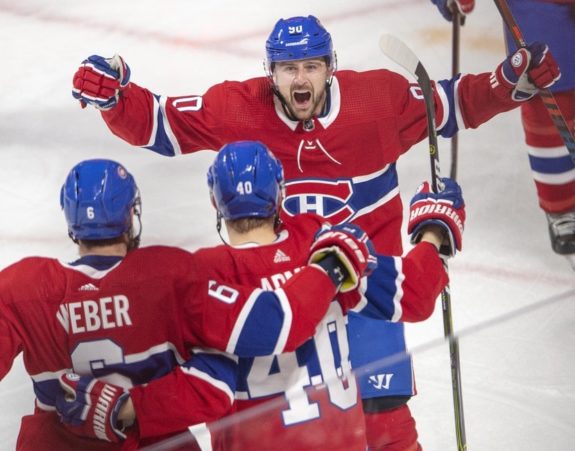
The Maple Leafs started their history with a lot of changes: first formed on Nov. 26, 1917, they had no official name, so fans called them the “Torontos” or “Blueshirts.” The team went on to win the Inaugural NHL Stanley Cup in 1918. In 1918, the Arena Company would form the Toronto Arena Hockey Club; however, on Dec. 9, 1919, due to financial issues, the team was sold to the St. Patricks Hockey Club, and the team changed its name to the Toronto St. Pats. After some financially difficult seasons, the St. Pats were sold to a group led by Conn Smythe, and on Feb. 14, 1927, the team was officially called the Maple Leafs. The Leafs would win their first Cup in 1927 and would win their most recent Cup in 1967, winning 13 overall, the second most cups in the NHL.
Heroes and Legends of the Glory Days
The Canadiens and Maple Leafs’ extensive history means both teams have an abundance of legendary players, players who helped define the franchise and win the hearts of fans.
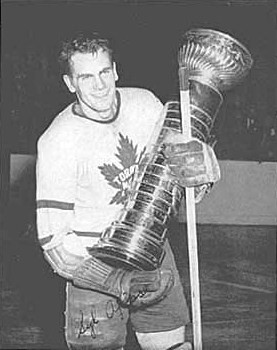
The Maple Leafs won 13 Stanley Cups, all before 1967; leading the way was Syl Apps, who won the Calder Trophy in 1937 for rookie of the year and was voted into the Hall of Fame (HOF) in 1961. Turk Broda played his entire career with the Maple Leafs winning five Stanley Cups and two Vezina Trophies for the top goaltender and was inducted into the HOF in 1967. King Clancy won the Stanley Cup with the team in 1932, then three more as a head coach, including the last Cup the franchise won in 1967; he was inducted into the HOF in 1957. Rounding out these Leaf legends are goalie Johnny Bower, winner of four Stanley Cups and two Vezina Trophies, and Ted Kennedy, winner of five Cups and the 1955 Hart Trophy for league MVP — the last Maple Leaf to win the MVP.
The Leafs enjoyed most of their success from the ’40s to the ’60s, while the Canadiens had most of their success from the ’50s to the ’70s. In this time frame, the Habs won 15 Cups with a record five in a row from 1956 to 1960. Leading the way to these Cups were legends like Maurice Richard, who was the first player to score 50 goals, winner of eight Cups, and the Hart Trophy winner in 1947 for league MVP. Jean Beliveau was the winner of the Art Ross Trophy for leading the league in points in 1956, the Conn Smythe as playoff MVP in 1965, two Hart Trophies and 10 Cups. Beliveau and Richard became two of the most beloved players in Montreal history. Other notable Canadiens legends are Ken Dryden, who won five Vezina Trophies and six Cups in just eight seasons; Henri Richard, Maurice’s little brother, who would win a record eleven Cups; and finally, Guy Lafleur, two-time winner of the Hart and Art Ross Trophies, and five-time Cup winner.
Modern Day Heroes and Why They are Important
Even though most of the success for each team was in the ’70s or earlier, there are still players that fans adore today. In the past 30 years, the Canadiens, who won two Cups after the ’70s in 1986 and 1993, have had stars like Patrick Roy, who helped lead the team to both of those Cups, and Mats Naslund, the last Canadien to score 100 points in 1985-86 with 110. After the Canadiens won their last Cup in 1993, the team started taking a downturn and became a mediocre team for decades. Through this mediocrity, fans still found heroes to cheer for, such as Saku Koivu for his leadership and dedication, and as the years wore on, Carey Price became this generation’s hero.
The Maple Leafs fell on even harder times from the ’70s through the ’90s, as they struggled through what is known as the “Ballard Years.” However, heroes and fan favourites still emerged, such as Borje Salming, a big Swedish defenseman; Darryl Sittler, who holds the record for most points in a game with 10; Mats Sundin, who became a Maple Leafs’ icon for his leadership and offensive prowess; and, these days two young stars in the making — Auston Matthews and Mitchell Marner. Matthews just won the Maurice “Rocket” Richard Trophy for leading the league in goals scored in a season.
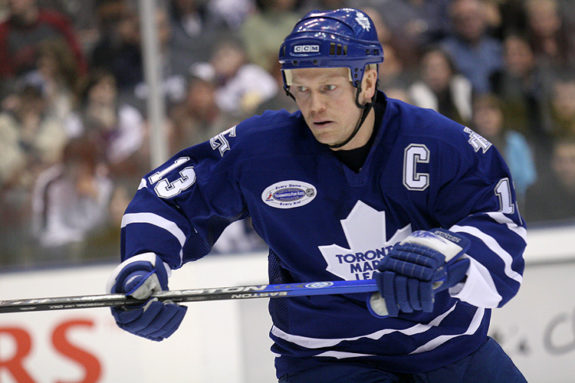
So, why is it so important to list players for each team? Well, those players are why people become fans of the team. Of course, each team is going to have its local fans; people living in Toronto or Ontario, for the most part, will be Maple Leafs fans, while in Montreal and the rest of Quebec, you have your Canadiens fans. There are also generational fans, which means if a mother or father was a fan, then you as a son or daughter would more than likely become one and pass this fandom down from generation to generation. In each case, no matter which team you root for, you have a favourite player or someone you wanted to be when skating on the pond by your house. Then, as the years go on, you find a new favourite player and so on. This love of players is what strengthens your bond with your team and fuels your lifelong passion.
The Hockey Writers‘ Peter Baracchini Talks About Being a Leafs Fan
Maple Leafs fans are a very passionate and optimistic group. Whether it’s good or bad, that fire within the fan base is always present. This team has always had a love-hate relationship with its fan base. As an Original Six team, there’s a high expectation that the fans have — to be the best. Whether it’s the Maple Leafs or the Canadiens, the fan base wants their team to be at the top. The Maple Leafs had strong seasons in the ’90s and early 2000s. The organization did whatever it could to build a competitive team and with that, hopes have always been high — it was either Stanley Cup or bust.
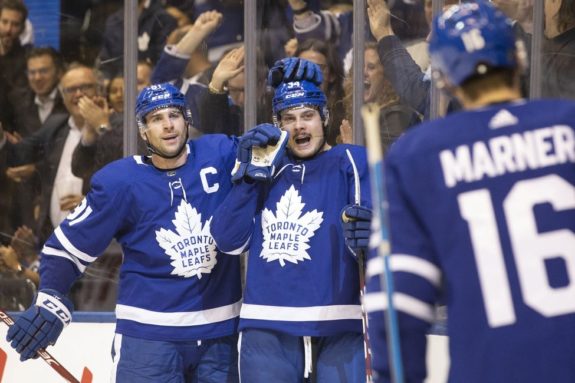
They came close a couple of times in my lifetime, most recently in 2001-02, where they lost in the Conference Final to the Carolina Hurricanes. When you get that far, you always expect big things to get to the next round and hoist the Cup. Those highs came with a lot of lows. From the 2004-05 lockout until 2016-17, the Maple Leafs only made the playoffs once, and we all know how that series against the Boston Bruins in 2013 ended. After years of disappointment, fans wanted to try and find something positive to cling to with the moves management made. In hindsight, the decisions and roster impact were met with displeasure and didn’t meet expectations.
Related: Maple Leafs’ Dubas Shows That He’s More Than Just a Roster Builder
Fans were ecstatic bringing in Phil Kessel and Dion Phaneuf. While it looked great in the short term, relying on them to win a Stanley Cup was a lofty expectation. It was the same thing with David Clarkson. Fans thought the grit and toughness would help the Maple Leafs, considering he went to the Cup Final, though, as a player on the team, he didn’t do much at all. Plus, fans were really sour about giving $5.25 million to a one-time 30-goal scorer. They became the scapegoats and ultimately led to a rebuild and making a more competitive team. The Leafs didn’t cut corners, and now we see the payoff of it.
The current roster the Maple Leafs have right now is the most complete we’ve seen in some time. We saw it in the regular season, and we see it now in the playoffs. Yet when things weren’t going well, pessimism started to come out. With all the disappointment the fans have faced in the past, that’s the only thing you think about. While fans try always to be positive, it isn’t easy at times as we resort to the worst-case scenario due to the past that haunts us. Even though the Maple Leafs made the playoffs the last five seasons, we knew exactly what would happen based on past results. With this management, this coaching staff and this roster, we can now expect the best out of everyone. We’ve waited so long for a team to be successful, and now we’re at the point.
The Hockey Writers‘ Blain Potvin Talks About Being a Francophone Canadiens Fan
The Canadiens were founded to market a team to the French Canadian population of the city. Back in 1909 — without getting into the socio-political aspects of language in Canada — francophones were seen as the poor, second-class citizens of the country, and they definitely felt they were overlooked and ignored. For many years, the franchise boasted a francophone star that the population could look up to, a hero to make them see that they could be as good as anyone else. It can be argued that Maurice Richard became the Babe Ruth of hockey and his perceived mistreatment set off the Quiet Revolution in Quebec when the francophone majority began to take control of the political institutions of their province.
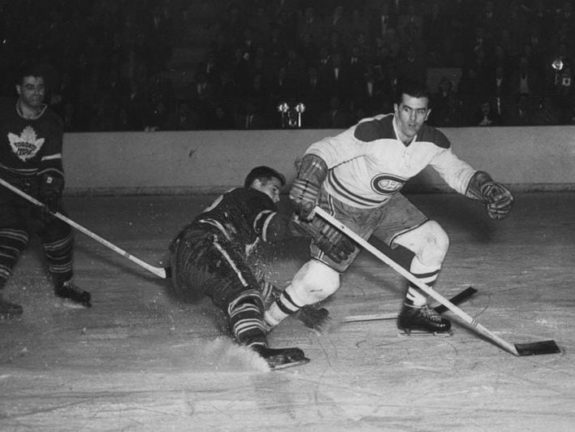
Also, over the years, the Canadiens rode the greatness of their players to win consistently, more than anyone else. Multiple dynasties were built, spanning decades; this led to great pride in the team, local language and culture. It also led to a need for the team that had become a proxy for the community’s political aspirations to continue to win. In Montreal, a season without a Stanley Cup was seen as a failure. Fast forward to today, where the Canadiens are suffering the longest championship drought in the team’s long and storied history.
Related: Montreal Canadiens Need to Choose Their Playoff Identity
There is a sense of entitlement to have a parade “along the usual route.” (from ‘April 13 marks 70th anniversary of Habs’ 1944 Stanley Cup victory,’ Montreal Gazette, April 13, 2014) Due to the history of winning that had become a regular occurrence for generations, having a team suffer a championship drought for 27 years makes a fan base that expects winning as a cultural right upset and ready to skew to the negatives.
Passion Has Deep Roots
It’s no question that the two most passionate fan bases in the league have a deep dislike for each other — even though there hasn’t been a real rivalry since the ’70s — but are still so similar in how they love their team. Canadiens fans may think they are more passionate because the Habs are part of their culture and deep-rooted in their heritage. Maple Leafs fans also have deep roots in their passion for their team. They feel like they are Canada’s team and want to feel like they are the fans that represent their country; it may not be as culturally rooted as the Canadiens’ fan base, but is just as important to them.
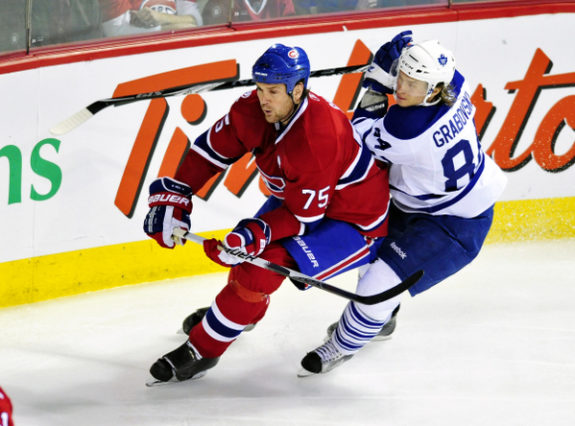
No matter how much each team’s fans dislike each other and want to feel they are the better fans or have the better team, in the end, they are the same. Both fan bases want the Cup, and both feel their team is superior to the other; both have suffered long droughts of mediocrity. It’s been a long while since the Habs/Leafs rivalry has been in full swing — the current playoff series is the first time both teams have met since 1979, as they were in opposite conferences through the ’80s and ’90s and only played each other a few times a season.
The contempt for each other is very deep-rooted, going all the way back to how the great nation of Canada was formed. The Canadiens represent the French and the Leafs represent the English in a never-ending battle of who should control Canada, except, of course, it’s who has the better hockey team instead of who will rule the country. The passion will always be there, and the rivalry will always run deep. However, no matter which side of the rink you are on, you are all the same fan, just wearing a different coloured jersey — unless the Canadiens are wearing their Reverse Retro jerseys, which should be burnt.